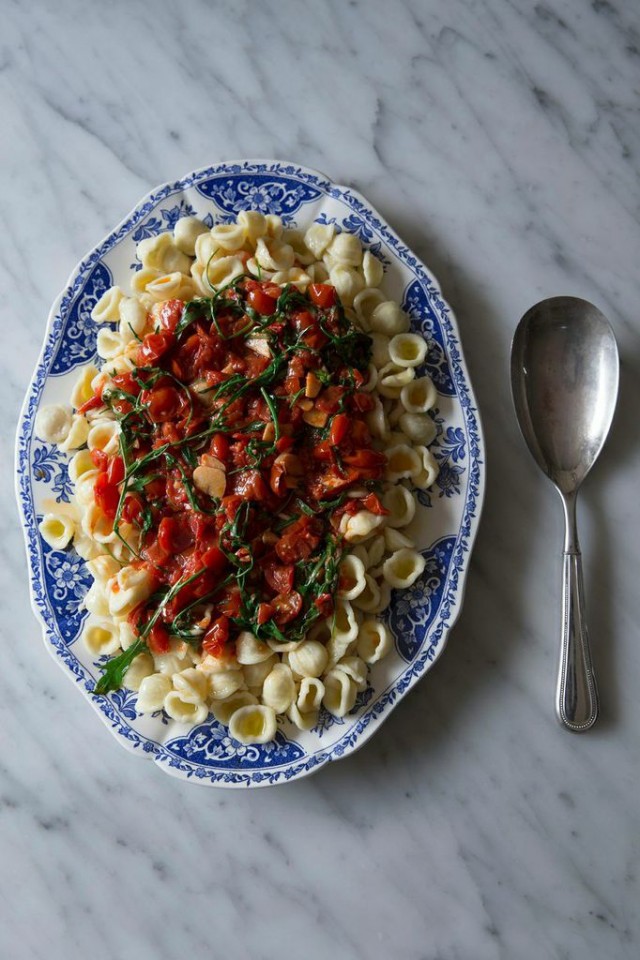
Image courtesy of Melissa Quantz
As many of you already know, this summer I spent an inspiring three weeks in Puglia volunteering at an art restoration workshop hosted by Tonio Creanza with his organization Messors. I have used the words “magical” and “life-changing” to describe my time at the Masseria La Selva and even after being home for close to three months these feelings have yet to fade.
I have spent the last twenty years of my life cooking. Going to cooking school, cooking in restaurants, working at catering companies, hosting cooking classes, leading culinary tours and cooking for family and friends. I figured I knew quite a bit about good food and how to make it.
And then I went to Puglia.
I’m still not sure how to explain it. In 21 short days I learned so much about food and cooking and how to take simple yet beautiful ingredients and make them taste so very good. I wonder if the way the Italians prepare food and gather people around the table just perfectly reflects where I am at right now in my journey as a cook and that is why the experience felt so powerful. That simple food is really what I love to make and to eat and to share with others.
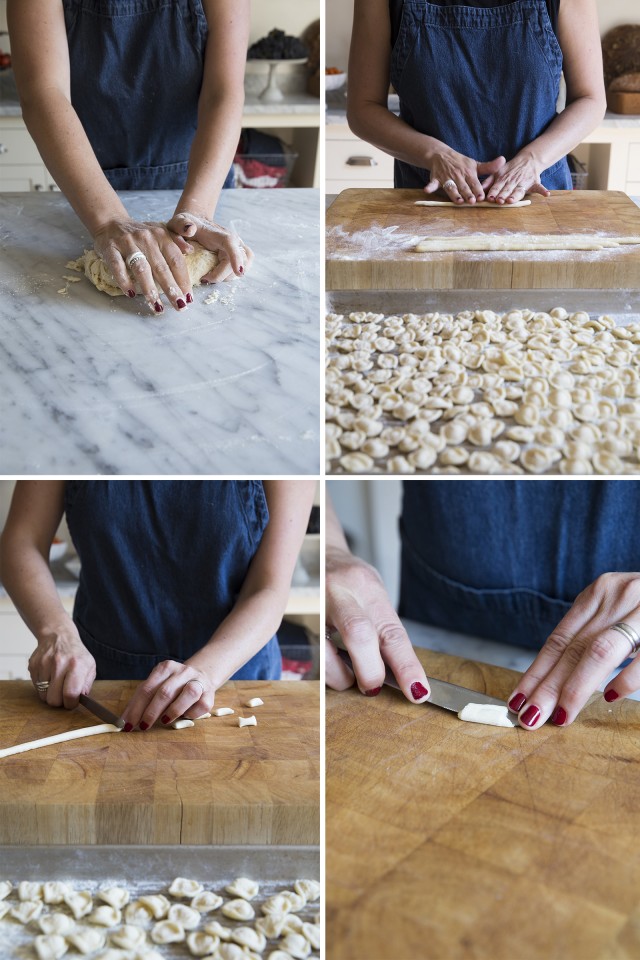
Images courtesy of Melissa Quantz
Orecchiette and tomato sugo. When I think of all of the dishes I learned to make in Puglia this is the one that represents everything that is meaningful to me about my time cooking and learning in the kitchen at the Masseria la Selva.
I learned how flour and water can be transformed into something that is so much more than the sum of its parts. That it takes some real muscle to make a decent pasta dough and plenty of patience and perseverance to roll it and form it into the shape of a little ear, known as orecchiette. That care, attention, years of experience and certainly love are the most important ingredients in making this typical Puglian pasta by hand. That I learned all this from Tonio’s mother, Grazia Berloco, who has been making orecchiette for close to 70 years, is a gift that I will cherish forever.
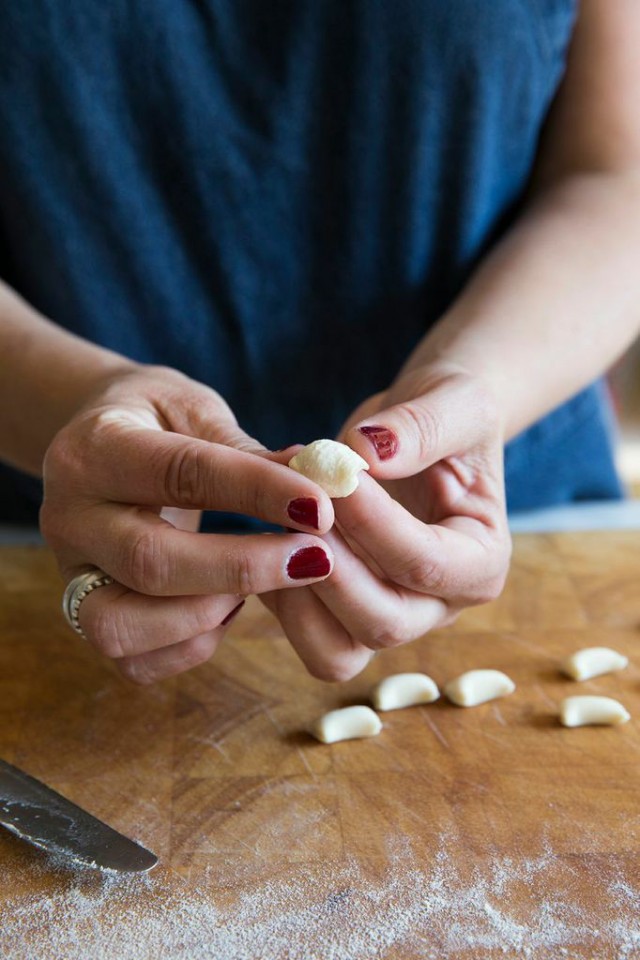
Image courtesy of Melissa Quantz
But what about the sugo? It is so dead simple I feel a bit embarrassed to call this a recipe. Still, when I first made this in Italy it was a real revelation to me. How can some tomatoes, garlic and plenty of good olive oil be transformed into something so magical, so delicious? I have been making this tomato sugo a lot since I have been home and each time I teach it at a class or serve it at a dinner party people seem as surprised as I am by the depth and complexity of the flavour from such a simple combination of humble ingredients.
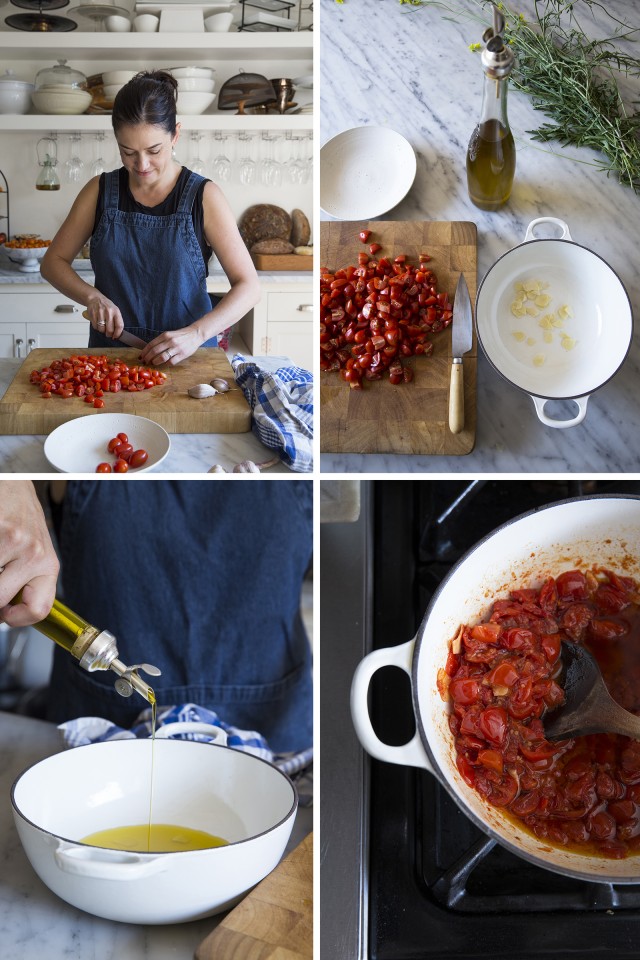
Images courtesy of Melissa Quantz
A few weeks ago I asked my sweet friend and talented photographer Melissa Quantz if she would be willing to come by and visually document the process of making the orecchiette by hand. It is one thing to read a recipe but I know that making orecchiete can be a bit tricky and I thought being able to see each of the steps could really demystify the process. Always enthusiastic, Melissa readily agreed and we spent an lovely, light-filled afternoon together kneading dough, rolling and shaping the orecchiette and preparing the sugo. All of the beautiful photos in this post are Melissa’s.
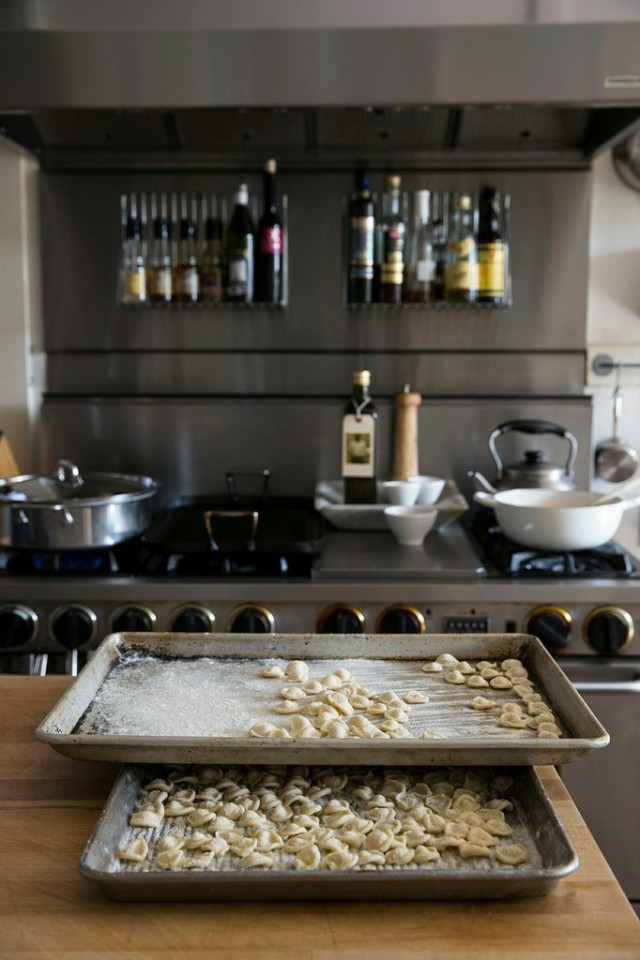
Image courtesy of Melissa Quantz
Over the next weeks we will be collaborating with Tonio Creanza to host some Puglian dinners here at Kitchen Culinaire headquarters in Vancouver. Tonio will lead us through a comparative olive oil tasting, I will be doing a demonstration of how to make orecchiete by hand and together we will be cooking up a five course menu of traditional dishes from Puglia. Dates and details to follow but if you would be interested in attending one of these evenings please drop us a line at events@kitchenculinaire.com
There are still some wonderful early fall tomatoes out there – happy sugo making!
xo J
Fresh Orecchiette Made with Semolina
Recipe is adapted from The Mozza Cookbook by Nancy Silverton
2 1/2 cups all-purpose flour, plus more for dusting
1 3/4 cups semolina flour
1 1/4 cup tepid water
Place both types of flour on a clean work surface and using your hands or a small whisk combine well. Make a well in the centre of your mixed flours and add the water at little at a time, stirring with your hands until a shaggy dough is formed. Depending on the humidity of your kitchen, you may need a little more or a little less water.
Knead the dough on a lightly floured work surface for 8 to 10 minutes until it is smooth and elastic. Cover the dough and allow it to rest for at least 40 minutes and up to overnight in the fridge.
When you are ready to start forming the orecchiette slice the round of dough into 1-inch thick slabs and roll each slab on a clean, dry work surface into a tube 1/4 in ch thick and set aside. Dust the work surface with flour and return the tubes to the dusted surface. Use a knife or a bench scraper to cut the dough into 1-inch long pieces, discarding the misshapen ends.
Dust a baking sheet lightly with semolina. Dust a plastic cutting board or other slightly textured surface very lightly with flour. Place one segment of pasta on the cutting board with the cut end facing you. With the ridged side of a table knife, gently press on the end of the segment furthest away from you and continue pressing toward the other end of the segment, flattening the dough into a small disk (about 1/4 inch thick) in the process.
Pick up the disk and invert it onto your index finger so that the side of the dough you pressed is facing down. Use the fingers of your other hand to pull the edges of the dough around the index finger, forming a cap-like shaped ear. Place the “little ear” on the prepared baking sheet and repeat, shaping the remaining dough segments in the same way.
Use the orecchiette right away or cover with plastic wrap and refrigerate for up to one day.
To freeze, place the baking sheet in the freezer until the pasta is firm to the touch. Dust off the excess semolina flour and transfer to plastic freezer bag or an airtight container and freeze for up to two weeks.
To cook bring a large pot of salted water to a boil. Add the orecchiette and cook for 6 to 8 minutes until al dente. Serve with a tomato sugo or the sauce of your choice.
Makes 2 lbs/1 kg of dough. Enough for 6 to 8 people.
Tomato Sugo with Wild Arugula
In Puglia there was plenty of wild arugula to be foraged from our hikes through archeological sides and even just by the side of the road. Amazingly, a very similar variety popped up in my Vancouver garden this year. This arugula has a distinctive peppery bite but you could, of course, substitute baby arugula leaves for the wild ones.
2 1/4 lb (1 kg) ripe tomatoes (I have been using cherry tomatoes this summer)
2 garlic cloves thinly sliced
1/2 cup good extra-virgin olive oil
Fine grain sea salt and freshly ground pepper to taste
2 generous handfuls of wild arugula leaves, washed well
Freshly grated Parmigiano Reggiano to serve
Coarsely chop the tomatoes and place in a medium saucepan. Add in the thinly sliced garlic cloves, the olive oil and some fine ground sea salt and freshly ground pepper.
Place over a medium flame and bring to a simmer. Reduce the heat and simmer the tomatoes for 30 to 40 minutes until they have broken down and become soft. Add in the arugula leaves and simmer for a minute or two more until they have wilted into the sauce. Check and adjust seasoning and ladle the sugo on top of freshly cooked orecchiette and top with some Parmigiano. Serve at once.
Serves 6 to 8.

Beautiful Julie! Thank you for sharing your love of Italian cooking and your always inspiring kitchen with me once again. I love time spent cooking, eating and photographing in the heart of your home.
Thanks Melissa. It was so wonderful to spend the day together and your images are simply beautiful. Can’t wait to work on another project together soon. xo J
I would love to come to your next dinner! I am friends with Jen and tonio! I heard the 25th is sold out and would love to hear if there is another date.
Hi Laurie, we have been so thrilled by the response and are now looking at a second date! We will keep you posted…
I m friends with Jen and would love to hear if you book another date!
Love the photos and hearing about the impact your trip had. Life changing is good. So very deep.